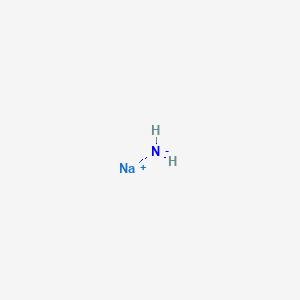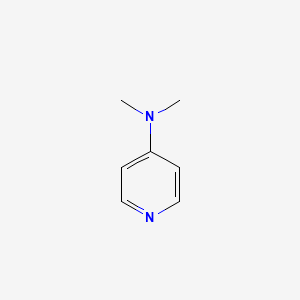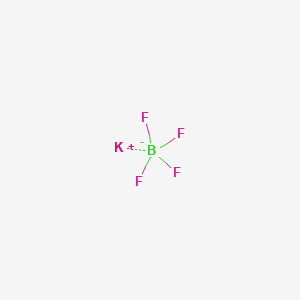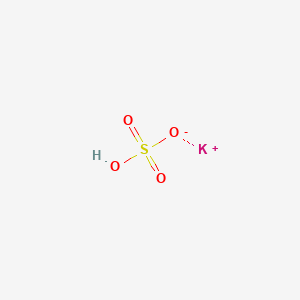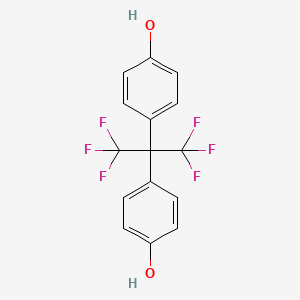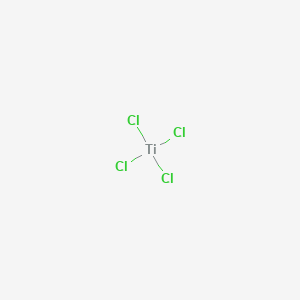Sodium Amide CAS 7782-92-5

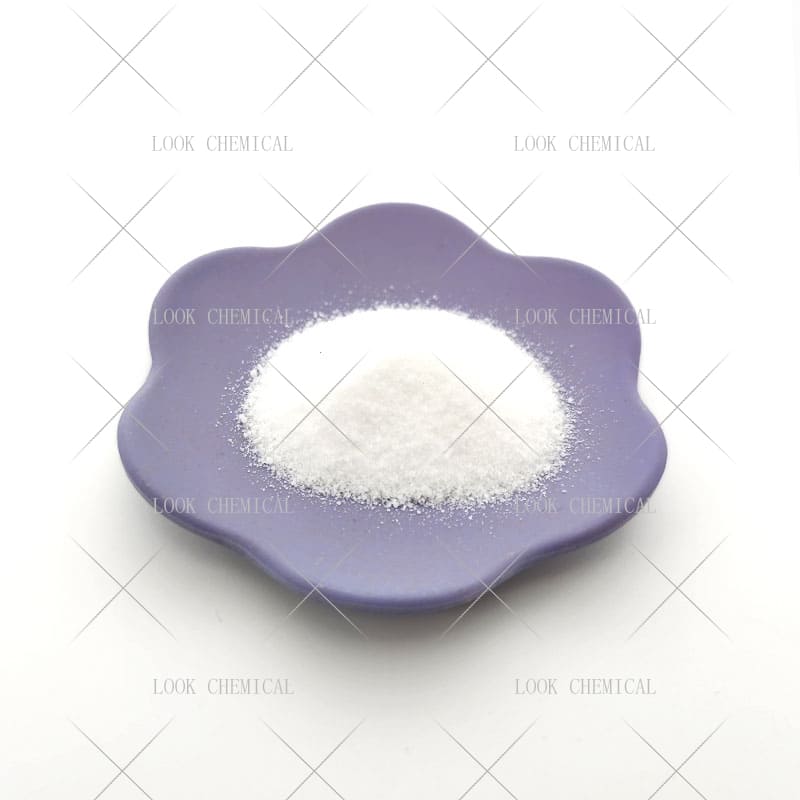
Sodium Amide CAS 7782-92-5 With Good Service
- Appearance:Powder
- Purity:99.8%
- Delivery:30days
- Sample Available:Available
- Payment:L/C,T/T,D/P,Paypal,Money Gram,Western Union
- Incoterm: FOB,CFR,CIF,EXW,FCA,CPT,CIP
- Transporta:Ocean, Land,Air, DHL,TNT FedEx
Name: Sodium Amide
CAS:7782-92-5
MOQ: 1KG
Directory Guidance on Sodium Amide
Chemical Structure
Basic Info:
| Melting point | 210 °C (lit.) |
| Boiling point | 400 °C (lit.) |
| density | 1.39 g/cm3 (25℃) |
| Fp | 85 °F |
| storage temp. | Store below +30°C. |
| solubility | reacts with H2O |
Product Introduction:
Sodium Amide, with the formula NaNH2, is an important inorganic compound with the chemical formula NaNH2. At room temperature, sodium amide appears as a white to olive green crystalline powder with the scent of ammonia, with a relative density of 1.40 and melting and boiling points of 210 and 400 degrees Celsius respectively. Furthermore, sodium amide is highly unstable in air due to moisture absorption from carbon dioxide in the air thereby leading to deliquescence/oxidation reactions and ultimately producing sodium hydroxide/nitrite/ammonia as by-products of production of these three substances.
Sodium Amide interacts violently with water to form sodium hydroxide and ammonia, producing enormous heat which could even result in explosion. Therefore, the environmental conditions must be strictly managed during storage and usage to minimize moisture intrusion or air contact.
Sodium Amide has active chemical properties and is both highly reducing and alkaline. In organic chemistry, its uses range from condensation acceleration, dehydrating agent, dehalogenating agent and aminating agent to aminating agent and even acting as a condensation accelerator. For instance, it serves as an important raw material or intermediate in producing compounds like vitamin A, sodium cyanide azide compounds indigo dye and hydrazine production.
Sodium Amide can dissociate into NH2- ions in liquid ammonia and is widely used as an initiator of anionic polymerization during production of polymeric materials like polyvinyl chloride. Due to its strong alkalinity, Sodium Amide also forms active carbon anions within ketones, acids, and nitriles; encouraging nucleophilic substitution reactions.
Preparing Sodium Amide usually employs either high temperature method or low temperature synthesis method. The former requires melting metallic sodium at 97-100degC and slowly adding dehydrated liquid ammonia before heating to 350-360degC for reaction with hydrogen gas to create product and hydrogen, before cooling, condensing into flakes, crushing to powder form and finally vacuum packaging it afterward. Meanwhile, low temperature synthesis method involves reacting metallic sodium with liquid ammonia at temperatures as low as -30degC with metal catalysts producing product through reaction with metallic catalysts to generate pure product with purity for packaging assuring smooth reaction progress and purity in final packaging. Both methods require strict anhydrous/oxygen-free conditions to ensure reaction is complete and purity in final packaging process.
As is evident, sodium amide is an increasingly used strong alkaline compound; however, due to its active chemical properties and high risk profile, safety regulations must be strictly observed during its use and storage.
Nature and Specifications:
| Item | Specification |
| Product Name | Sodium Amide |
| CAS No. | 7782-92-5 |
| Appearance | Powder |
| Shelf Life | 2 years |
| Packing | As your requirements |
| form | crystalline |
| color | Greyish white powder |
| Odor | Ammonia like |
Product service:
- Certificate Of Analysis (COA)
- Material Safety Data Sheet (MSDS)
- Route of synthesis (ROS)
- Method of Aanlysis (MOA)
- Nuclear Magnetic Resonance (NMR)
- Packing pictures and loading video before loading
- Free Sample
- Factory audit
Sodium Amide has a wide range of applications in the chemical industry and other fields. Its strong basicity and reducing properties make it a preferred reagent in organic synthesis, metal extraction, catalytic reactions, and many other applications.
1. Organic Synthesis
Sodium Amide is a well-known reagent in organic chemical synthesis. Its application as an aminating agent and deprotonating agent is very important. As a strong base, it initiates amination reactions, thereby providing many pathways for the formation of organic compounds with amino groups. For example, Sodium Amide can be used as an amidating agent for the amination reaction of aromatic compounds to produce aromatic amine compounds. Sodium Amide is also suitable for some deprotonation reactions, that is, removing protons from specific species to form more active anions. Some reduction reactions also use Sodium Amide. For example, for acyl chlorides or halides, it reduces them to hydrocarbons or other structures.
2. Metal Extraction and Metallurgy
Sodium Amide is also used in metal extraction and metallurgy. It can be combined with metal oxides as a reducing agent to reduce metals from oxides. For example, it can reduce aluminum oxide in bauxite Al₂O₃ to aluminum metal. In certain metallurgical processes, its strong alkalinity can react with certain acidic compounds, helping to separate valuable metals from ores. Its strong reducing properties allow Sodium Amide to be used to reduce metals from certain metal ions, which is very advantageous when extracting specific metals.
3. Catalytic reactions
In the field of catalysis, Sodium Amide is also used as a catalyst or catalyst activator. For example, in certain organic reactions, it can promote the reaction by deprotonation and the generation of highly active negative ions. Under its action, the reaction rate and yield of organic reactions can be significantly improved. Especially in certain organic synthesis reactions, it generates active intermediates, allowing the reaction to proceed under mild conditions, thereby saving energy and improving the efficiency of the reaction.
4. Synthesis of high-energy substances
Sodium Amide is also used to make high-energy materials. It is used in the military and aerospace fields to synthesize some high-energy density compounds. For example, certain explosive compounds with very high energy output can be made with Sodium Amide and used as explosives or propellants. Its strong alkalinity and reducing properties make it very effective in making these high-energy materials.
5. Uses in pesticides and plant protection
Sodium Amide has many applications in pesticides and plant protection. It plays a very important role as an aminating agent in the synthesis of some pesticide intermediates. These pesticides are often very useful for controlling crop pests and diseases, thereby increasing agricultural yields. It can also be used as a component of herbicides and is used to synthesize some chemicals that can effectively inhibit the growth of weeds.
6. Water treatment
Sodium Amide has a strong alkalinity and has some applications in water treatment. It is used to change the pH value of water in certain purification processes. It can neutralize acidic substances in water, change the pH value of water, and stabilize water quality. In some applications of water treatment, it can also react with some metal ions in water to produce water-insoluble amino compounds, thereby removing harmful pollutants from water.
7. Electronics industry
In the electronics industry, Sodium Amide also has applications, especially in the semiconductor manufacturing process. During the manufacturing process, it is often used to treat silicon materials and remove some impurities on the silicon surface. It can effectively clean silicon wafers and prepare for subsequent processes such as photolithography and etching. In addition, it is also used in chemical reactions of some electronic devices to help form the required chemical environment.
8. Gas Adsorption
Sodium Amide can also be used for gas adsorption and purification. It is used as an adsorbent in certain industrial applications to capture harmful gases or pollutants. For example, in the chemical industry, it can be used to adsorb and remove ammonia and nitrogen from polluted gases. It reacts chemically with these gases, converting them into harmless substances, thereby purifying the air.
1. Strong alkalinity; strong reducing property.
Sodium Amide is a very strong base that reacts quickly with water to produce ammonia and sodium hydroxide. This property makes it very useful in many reactions that require high alkalinity. For example, in organic synthesis, it is an effective aminating or deprotonating agent that promotes the reaction. Its reducing property also makes it play an important role in reduction reactions; it can reduce some metal oxides to metals or halides to hydrocarbons.
2. Wide application fields
However, the application of Sodium Amide is very wide. It plays a very important role in organic chemical synthesis. For example, it is heavily involved in amination and reduction reactions; in addition, its use extends to many industries such as metallurgy, catalysis, pesticide synthesis, and electronics. From these properties, Sodium Amide exhibits strong alkalinity and reducing properties, which can adapt to different chemical environments and meet different industrial requirements.
3. High reaction efficiency
Sodium Amide is highly reactive. It can quickly participate in the reaction, greatly improving the reaction rate and yield. It is more suitable for complex organic synthesis reactions, accelerates the deprotonation step, generates active intermediates, and thus promotes the efficiency of the reaction process. These advantages make it valuable for application in industrial chemical reactions.
4. Relatively controllable
As a chemical reagent, Sodium Amide is a relatively controllable reagent in the reaction process. In many reactions, its dosage and reaction conditions can often be flexibly adjusted according to actual needs. For example, in some reactions, it can be carried out under milder conditions, thus providing operators in organic synthesis with a certain degree of flexibility. In industrial production, the feasibility of Sodium Amide to adjust the reaction level by quantity can usually ensure the efficiency and safety of the synthesis.
5. Economical
The price of Sodium Amide is usually lower than that of some other chemical reagents with strong alkalinity and strong reducing properties. In many industrial applications, it not only has a good reaction effect, but also makes the application economical and efficient due to its relatively low cost. This is of great significance for cost control in large-scale production.
6. High selectivity
In some reactions, Sodium Amide exhibits high selectivity, especially in organic reactions involving amination. It can effectively promote the desired reaction without interfering too much with other reaction pathways. Such high selectivity makes it an ideal reagent for complex organic syntheses to obtain high-purity products.
Contact Us
Product Package picture:
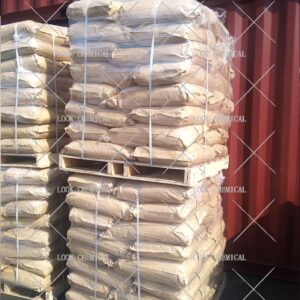
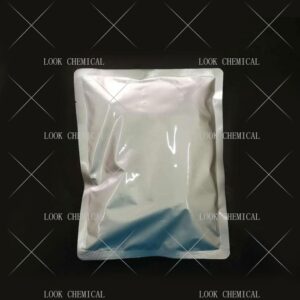
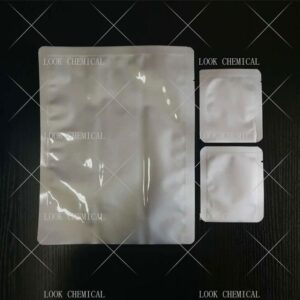
Related References:
chemicalbook-Sodium Amide
Sodium Amide Manufacturer
Contact Us
As an experienced Sodium Amide manufacturer and supplier, Look Chemical is committed to producing and selling high quality products.
We cooperate and trade with 6000+ factories around the world, and our high-quality products and excellent services make us enjoy a high reputation internationally.
As Sodium Amide CAS 7782-92-5 supplier, Look Chemical provides supply chain solutions to partners and customers in a wide range of industries. We offer competitive pricing and quality products.
If you have a demand for this product, please contact our company’s sales staff, we will provide you with a solution in the shortest time.
Transport proposal

1. For products ≤50kg, we recommend using express delivery, which is usually called DDU service (discounted, convenient).
2. For products ≤500kg, we generally recommend air freight, which is usually called FOB, CFR or CIF service (fast and efficient).
3. For products >500kg, we generally recommend shipping by sea, which is usually called FOB, CFR or CIF service (economical, safe).
4. For high-value products, please choose air or express to ensure the safety of product transportation.
Shandong Lookchemical service:
* Timely reply and 24 hours online, the professional team will provide you with the most favorable prices and high-quality products.
* The sample supports testing and inspection.
* Each batch of products will be tested to ensure that its quality meets user needs.
*Packaging can also be made according to customer requirements.
*Any inquiries will be answered by our relevant personnel within 24 hours.
*We will provide you with commercial invoice, packing list, packing list, COA, health certificate and certificate of origin if you need it. If your market has other special requirements, please let us know.
*We will monitor the logistics information in real time and will share the information with you.
* You can consult us at any time if you have any questions about the product, and we will answer you in time.
*If you have any questions about the product, you can report it to us, we will deal with it in time for you, and the product can be returned.
Contact Us
Frequently Asked Questions(FAQ):
We will make samples before mass production, and after sample approved, we’ll begin mass production. Doing 100% inspection during production, then do random inspection before packing.
Our MOQ is 1kg. But usually we accept less quantity such as 100g on the condition that sample charge is 100% paid.
Yes. We’ll give you product analysis report before shipping.
Different quantity has different discount.
Yes. Welcome to visit.
You can get free samples for some products,you only need to pay the shipping cost or arrange a courier to us and take the samples. You can send us your product specifications and requests,we will manufacture the products according to your requests.

